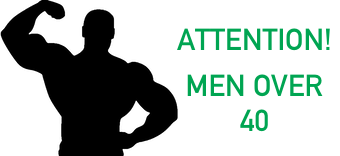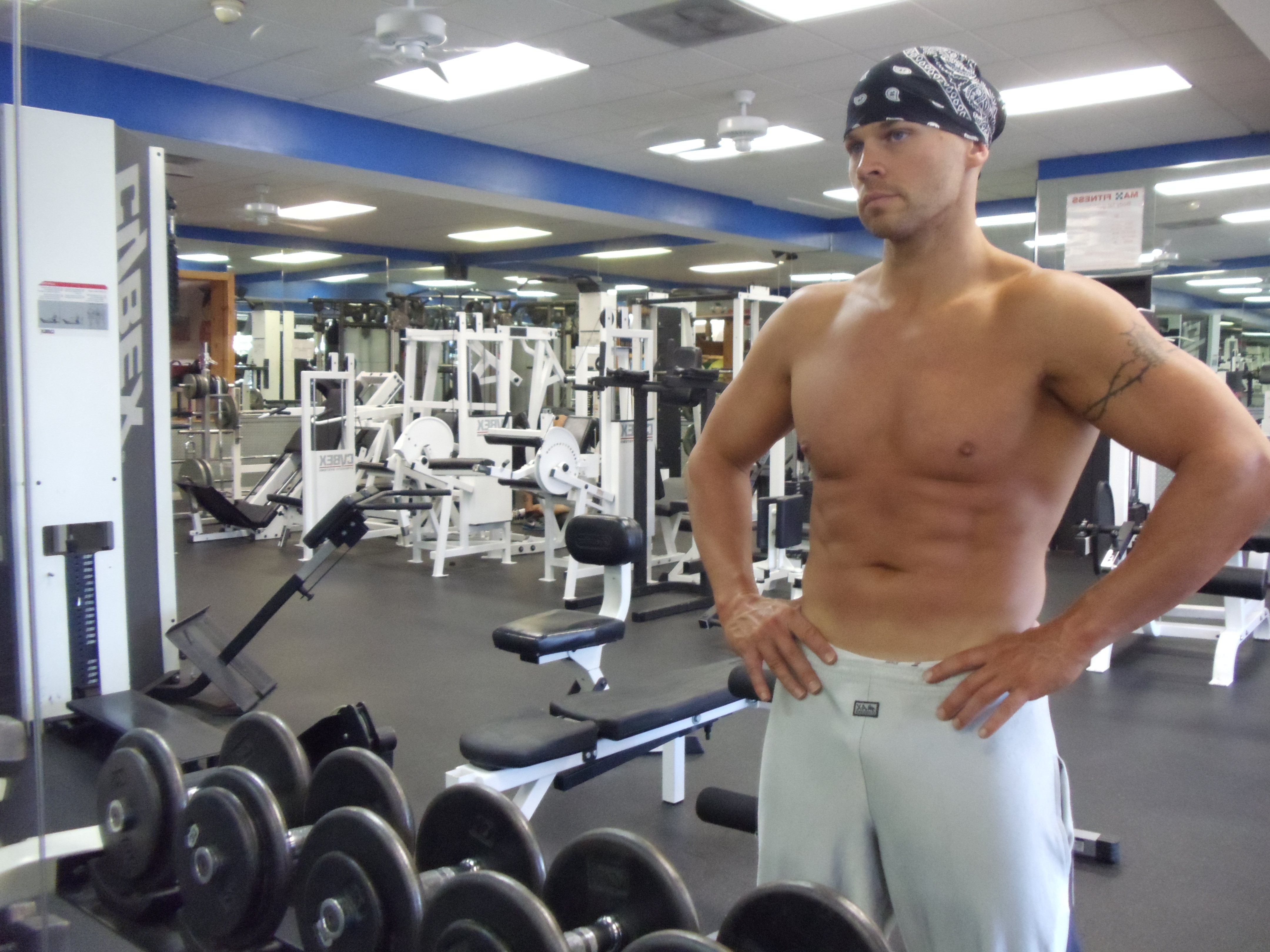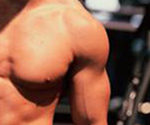Hi everyone, welcome back to my blog! Today we are going to talk about exercise selection, a very important topic to discuss when designing your program. This is one that I see many gym-goers and even other trainers miss the mark on very often. Surprisingly and sadly many programs are incomplete or over-train certain muscle groups or joints. In order for the body to continue to perform without eventual injury, proper exercise selection protocol must be in balance. Now, without going all corrective exercise crazy on you folks (as that is a topic for another day) I’m going to assume that you are in OK condition with not too many postural imbalances. Of course each person is different so this is not a one-size-fits-all scenario. Here is a general selection of exercises for beginners:
Please select one to two exercises for each body part:
- Legs: leg press, leg extension, leg curl, bodyweight squats, supported lunges
- Back: seated row, lat pulldown, gravatron, any machine-based exercises
- Chest: Hammer Strength, or machine bench, incline Machine, pec-deck fly machine, or any machine-based chest exercises
- Shoulders: shoulder press machine, side raise machine, rear delt fly on pec deck machine
- Biceps: machine curls, cable curls
- Triceps: cable tricep extension, machine extensions
- Abs: crunches, crunches with feet up, ab machine
Notice most of the beginner exercise selection is seated and on machines. This is to help with positioning and teaching movement. Many beginners tend to have bad posture and poor postural alignment. With free weight and body weight exercises, they can be much more susceptible to injuries. So start out slowly with machines and learn to isolate the muscle along with good movement patterns and then move to full body and free weight exercises. It should also be noted that intermediate and advanced training will still use some beginner exercises in their routine from time to time. I’ve had some beginning clients come in and very quickly progress out of the beginner stage within a couple of workouts. I’ve also had some older very deconditioned clients stay in the beginner stage for months to years. It really depends on a lot of factors, both mental and physical. What I am trying to help everyone with is to understand where you’re are and what is appropriate for you. These aren’t hard specific guidelines, they’re more general. Also, because I have seen gym members come into the gym on many occasions, having just read the latest edition of Six Pack Abs Magazine or SPAM (haha I love the irony), and the model on the inside says I do this exercise, and that exercise, and if you want abs like these all you have to do is hang from this bar and lift your legs all the way up to your hands for 5 sets of 10 reps and you will be six pac smil’in (!) I feel it necessary to give you correct information.
SOAP BOX: the hanging ab exercise might be a good exercise for some, like 5 to 10% of the entire population. For the rest of us it’s terrible advice. I’ve seen clients come in and try this only to end up laying on their back or injuring their back or shoulder or both. There are three things wrong with this ab exercise: #1 this is way too hard for most, and trying it in a de-conditioned state could very possibly get you injured, # 2 you can do any ab routine on the planet and if your diet is not in check, you won’t see anything unless you’re one of those rare gifted 1% people or taking some enhancements, # 3 I know this from personal experience the guy in the magazine with the six pack abs doesn’t even follow the routine that’s written in there for you to follow. That’s right, I did an ab spread as a model, and I can honestly say I never even spoke to the writer. The routine I did for abs was way different from what they had suggested others do to look like me. That’s just plain stupid!
Okay enough rambling here’s the rest of the progression. Remember intermediate and advanced still do beginner exercises they just do more volume and have greater exercise selection to choose from. Also this is a general example. There are many many many other exercises out of the scope of what I’m talking about today:
Intermediate: in addition to beginner exercises select 2-4 exercises for legs and back, 2-3 exercises for chest and shoulders, 1-2 exercises for biceps and triceps and 1-2 exercises for abs:
- Legs: one legged leg press, one leg extension leg curl, abduction, abduction, hack squats, stiff leg deadlifts, Smith squats
- Back: barbell row, dumbbell row, back extension, reverse extension, T Bar rows
- Chest: Smith Press, barbell flat press, barbell incline press, cable flyes, decline, push ups
- Shoulders: supported front dumbbell press, front raise, rear cable / dumbbell flys
- Biceps: standing curls, cable curls ,barbell curls dumbbell curls
- Triceps: cable tricep extension, barbell extension, rope extension, machine dips, Skull Crushers, close-grip press
- Abs: planks, Roman chair lifts, reverse crunches, sit ups, leg lifts, side bench curl ups, cable crunches, Ect…
It should also be noted that the volume of a person’s workout increases depending on if they are beginner, intermediate, or advanced. That’s why I’ve listed how many exercises should be selected for each muscle group. Keep in mind that the weekly volume will be different. For instance: a beginner may do one exercise per muscle group once to twice per week whereas an advanced trainee may train one muscle group in one day and might do six different exercises just for legs on that day and possibly more. So beginners may do total body workouts, intermediates may do split upper/lower or push/pull workouts and advanced may do one body-part per day. However I have seen Advanced workouts that are total body as well. So again this is not a one-size-fits-all, it is general:
Advanced : 3-6 exercises for legs, 3-6 exercises for back, 3-4 exercises for chest, 3-4 exercises for shoulders, 2-3 exercises for biceps, 2-3exercises for triceps, 2-4 exercises for abs, or more:
- Legs: squats, plyometric jumps, lunges, bench lunges, step-ups, reverse lunges, Smith lunges.
- Back: deadlift, pull ups, pull up plyometrics, weighted back extensions, weighted pull ups
- Chest: push-up plyometrics, powerlifting form bench press, dumbbell presses, dips, weighted dips,decline presses with dumbbells, dumbbell flyes
- Shoulders: upright rows, behind the neck presses, standing shoulder presses, dumbbell rear delt flyes, standing Arnold presses.
- Biceps: incline curls, concentration curls, squat curls, straight bar curls
- Triceps: plyo Tri push-ups,dips,decline cable extension, reverse bench press, one arm dumbbell extension.
- Abs: hanging leg lifts, windshield wipers, one arm or leg planks, stability ball leg raise, twisting reverse crunches, scissors while hanging, hanging leg to hand raises, Ab Roller from feet, ect..
Now some people may look at this list and say a lot of the advanced exercises are easy. I would challenge that by saying the exercises that are selected within the advanced can easily be done wrong causing injury. If you’re squatting or deadlifting or doing a bench press, and you have bad form, you can easily get injured. There are many many things to look at when you are checking form on these exercises. That is why I recommend everyone who’s reading this to also watch my videos to see correct form on exercises.
There you have it! Enjoy boys and girls, but remember who you are. Push yourself hard and get good results. Just keep in mind your abilities and try to move forward.
Thanks, Donovan. Please leave comments below!



